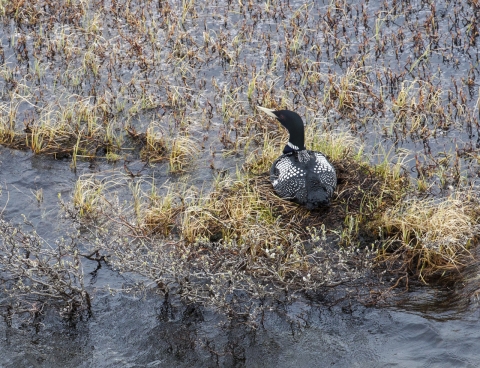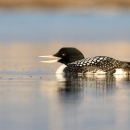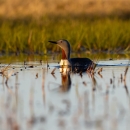Since 2005, the U.S. Fish and Wildlife Service has partnered with the National Park Service to conduct surveys for yellow-billed loons in the Bering Land Bridge National Preserve and Cape Krusenstern National Monument located in the northwest Arctic of Alaska. Yellow-billed loons are a species of conservation concern due to their small global population and habitat limitations, and are considered indicators of water quality and health of freshwater and marine environments. Because yellow-billed loons are long-lived with a propensity to return to the same breeding sites each year, they are ideal candidates for long-term monitoring to determine trends in occupancy, density, distribution, and types and levels of contaminants burdens. Though these surveys are designed for and focused on detecting yellow-billed loons, we collect data on all species of loons observed. To learn more about the different components of this collaborative survey and research effort, please visit the National Park Service website or watch these informative videos about our work.
Monitoring, Research, Species status assessment







